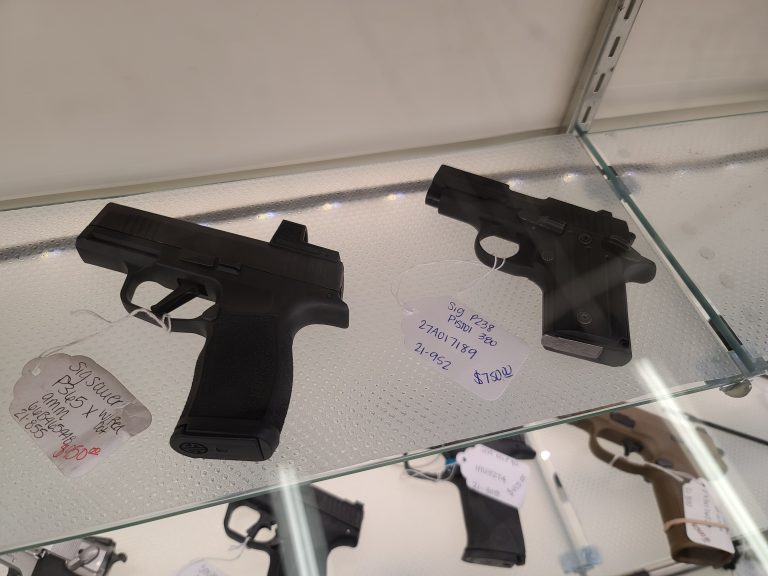Gun sales slipped a bit at the end of 2021.
While the total sales numbers for the year–as measured by the number of gun-related FBI background checks–were strong, the fourth quarter and December numbers were less than stellar. 2021 was the second-best year on record for gun sales. But December 2021 was only the fifth-best December on record, and the same is true for the fourth quarter.
The downturn comes despite there being some reason to believe the end of 2021 might actually surpass 2020. Certainly, 2020 was an unprecedented year–as every ad told us over and over again–with a unique set of chaotic factors that contributed to the all-time demand. However, most of that demand was concentrated in the first half of the year. Plus, the March and June sales spikes dried up much of the industry’s supply.
So, it seemed that late 2020’s gun sales might have been suppressed. And, therefore, late 2021 had a chance to overtake it. Black Friday 2021 outsold 2020, and it seemed to be a sign the fourth quarter might do the same.
But, instead, it appears the pent-up demand was already satisfied in the first half of 2021. The early months of the year were when 2021 outpaced 2020. January, February, and April set all-time records before the pace fell back to the second-best-ever rate.
Supply didn’t return to normal by early 2021 and prices remained elevated to compensate, especially in the ammo market. However, the industry managed to ramp up production quickly enough to satisfy anybody who couldn’t buy the gun they wanted in 2020.
Then demand had to be sustained by the events of 2021 instead of 2020. And, the most significant motivating factors had moderated by then. Though, they didn’t entirely dissipate.
The pandemic dragged on, but Americans got more used to living in it–as used to it as you can at least–and the initial shock of that accompanied the onset of a 100-year contagion has worn off. Racial tensions, controversy over-policing, and the threat of rioting remain, but–again–they aren’t anywhere near the level seen in the summer of 2020.
Even the political factors aren’t as stark as they were in 2020. While President Joe Biden (D.) remains as committed as ever to instituting new gun restrictions and sales bans, the chances of passing new gun laws through Congress all but evaporated by the fourth quarter of 2021. And, though he has pursued executive actions, he wasn’t even able to get his preferred ATF nominee confirmed despite Democratic control of the Senate.
So, what does the decline mean?
I think the main question is whether the industry will be able to predict the post-pandemic market better than it did the post-Sandy Hook market. In 2013, the industry saw an incredible spike in demand for AR-15s after the massacre provoked the possibility that Congress might re-institute the “assault weapons” ban. ARs were being sold for two or even three times their normal price at the peak.
That led to many manufacturers ramping up production in a huge way. However, when federal gun-control measures faltered, the market was left with a glut of ARs. Prices collapsed, and so did several smaller manufacturers.
Will something similar happen now?
2021 was a strong year. It was the second-best ever for gun sales. Publicly-traded gun makers saw huge profit increases because of that.
But, now we see the first signs demand may actually fall a bit further. Next year could further depress demand. The pandemic has been unpredictable, but there is some reason to believe the Omicron wave could see the decoupling of cases with hospitalizations and death. That’s what we’ve been working towards since the very earliest days of March 2020. Maybe 2022 will restore public confidence the pandemic is truly over, and a more stable, less chaotic future is ahead.
Plus, national politics will likely make the odds of new gun legislation even longer. President Biden’s polling has been atrocious ever since the botched Afghanistan pull out and has only gotten worse. His party is already working against historical momentum in the midterms, and Republicans will probably recapture control of the House, perhaps the Senate too.
Of course, President Biden’s antagonistic approach to gun owners will likely continue to be a strong driver of gun sales. He’s unlikely to get the significant legislative reforms he wants, especially if Republicans do take at least one house of Congress. However, the executive actions he’s already pursuing will effectively outlaw millions of guns and lead to years of high-profile legal fights.
Plus, there is a lot of data that suggests an unusual number of new gun owners have been brought into the market over the past two years. A significant percentage of them will probably embrace gun ownership as a new hobby and begin buying more guns in the process. That’s why sales often level off somewhere higher than before the surge, and history is likely to repeat itself this time around too.
The big question left to be answered is exactly where the leveling off stops in 2022.






